
City streets and sidewalks in the United States have been engineered for decades to keep vehicle occupants and pedestrians safe. If streets include trees at all, they might be planted in small sidewalk pits, where, if constrained and with little water, they live only three to 10 years on average. Until recently, U.S. streets have also lacked cycle tracks – paths exclusively for bicycles between the road and the sidewalk, protected from cars by some type of barrier.
Today there is growing support for bicycling in many U.S. cities for both commuting and recreation. Research is also showing that urban trees provide many benefits, from absorbing air pollutants to cooling neighborhoods. As an academic who has focused on the bicycle for 37 years, I am interested in helping planners integrate cycle tracks and trees into busy streets.
Street design in the United States has been guided for decades by the American Association of State Highway and Transportation Officials, whose guidelines for developing bicycle facilities long excluded cycle tracks. Now, the National Association of City Transportation Officials, the Federal Highway Administration and the American Association of State Highway and Transportation Officials have produced guidelines that support cycle tracks. But even these updated references do not specify how and where to plant trees in relation to cycle tracks and sidewalks.
In a study newly published in the journal Cities and spotlighted in a podcast from the Harvard T. H. Chan School of Public Health, I worked with colleagues from the University of Sao Paulo to learn whether pedestrians and bicyclists on five cycle tracks in the Boston area liked having trees, where they preferred the trees to be placed, and whether they thought the trees provided any benefits. We found that they liked having trees, preferably between the cycle track and the street. Such additions could greatly improve street environments for all users.
Separating pedestrians and cyclists from cars
To assess views about cycle tracks and trees, we showed 836 pedestrians and bicyclists on five existing cycle tracks photo montages of the area they were using and asked them to rank whether they liked the images or not. The images included configurations such as a row of trees separating the cycle track from the street or trees in planters extending into the street between parked cars. We also asked how effectively they thought the trees a) blocked perceptions of traffic; b) lessened perceptions of pollution exposure; and c) made pedestrians and bicyclists feel cooler.
Respondents strongly preferred photo montages that included trees. The most popular options were to have trees and bushes, or just trees, between the cycle track and the street. This is different from current U.S. cycle tracks, which typically are separated from moving cars by white plastic delineator posts, low concrete islands or a row of parallel parked cars.
Though perception is not reality, respondents also stated that having trees and bushes between the cycle track and the street was the option that best blocked their view of traffic, lessened their feeling of being exposed to pollution and made them feel cooler.
Factoring in climate change
Many city leaders are looking for ways to combat climate change, such as reducing the number of cars on the road. These goals should be factored into cycle track design. For example, highway engineers should ensure that cycle tracks are wide enough for bicyclists to travel with enough width to pass, including wide cargo bikes, bikes carrying children or newer three-wheeled electric bikes used by seniors.
Climate change is increasing stress on street trees, but better street design can help trees flourish. Planting trees in continuous earth strips, instead of isolated wells in the sidewalk, would enable their roots to trade nutrients, improving the trees’ chances of reaching maturity and ability to cool the street.
Drought weakens trees and makes them more likely to lose limbs or be uprooted. Street drainage systems could be redesigned to direct water to trees’ root systems. Hollow sidewalk benches could store water routed down from rooftops. If these benches had removable caps, public works departments could add antibacterial or anti-mosquito agents to the water. Gray water could also be piped to underground holding tanks to replenish water supplies for trees.
The central argument against adding cycle tracks with trees to urban streets asserts that cities need this space for parallel-parked cars. But cars do not have to be stored on the side of the road. They also can be stored vertically – for example, in garages, or stacked in mechanical racks on urban lots.
Parking garages could increase occupancy by selling deeded parking spaces to residents who live nearby. Those spaces could provide car owners with a benefit the street lacks: outlets for charging electric vehicles, which rarely are available to people who rent apartments.
Bus rapid transit proponents might suggest that the best use of street width is dedicated bus lanes, not cycle tracks or street trees. But all of these options can coexist. For example, a design could feature a sidewalk, then a cycle track, then street trees planted between the cycle track and the bus lane and in island bus stops. The trees would reduce heat island effects from the expansive hardscape of the bus lane, and bus riders would have a better view.
More urban trees could lead to more tree limbs knocking down power lines during storms. The ultimate solution to this problem could be burying power lines to protect them from high winds and ice storms. This costs money, but earlier solutions included only the conduit for the buried power lines. When digging trenches to bury power lines, a parallel trench could be dug to bury pipes that would supply water and nutrients to the trees. The trees would then grow to maturity, cooling the city and reducing the need for air conditioning.
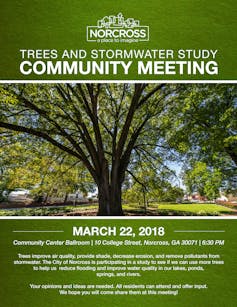
Climate street guidelines for U.S. cities
To steer U.S. cities toward this kind of greener streetscape, urban scholars and planning experts need to develop what I call climate street guidelines. Such standards would offer design guidance that focuses on providing physiological and psychological benefits to all street users.
Developers in the United States have been coaxed into green thinking through tax credits, expedited review and permitting, design/height bonuses, fee reductions and waivers, revolving loan funds and the U.S. Green Building Council’s Leadership in Energy and Environmental Design rating system. It is time to put equal effort into designing green streets for bicyclists, pedestrians, bus riders and residents who live on transit routes, as well as for drivers.
Anne Lusk is is a research scientist at Harvard University. This post originally appeared at The Conversation.
Weekly Newsletter
Get building science and energy efficiency advice, plus special offers, in your inbox.





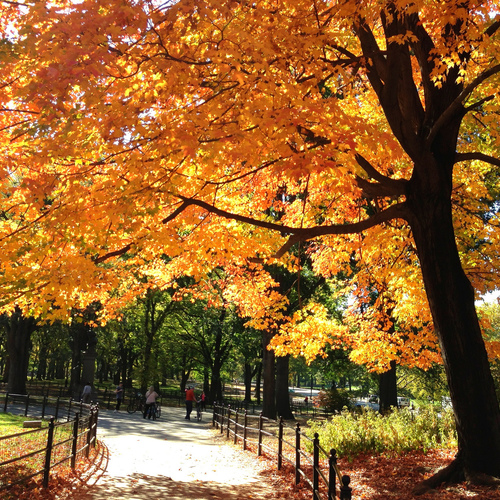
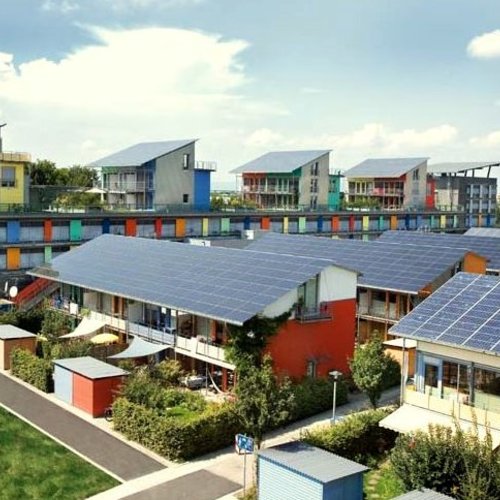
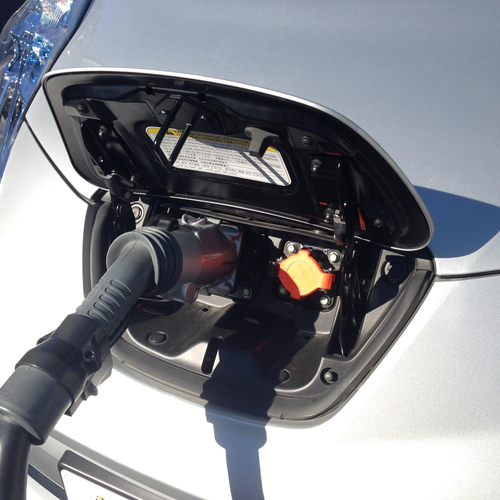
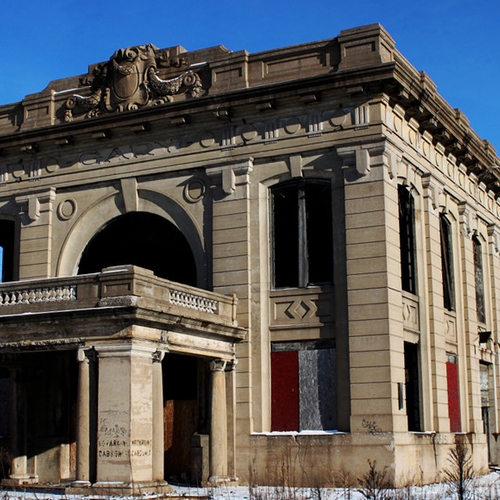






17 Comments
The process starts and ends at the moment by eliminating asphalt aka petroleum from the materials mix. Honestly.
What would Lance Armstrong have to say about all this? ;)
While I am all for safer city paths for bikes and pedestrians. What annoys me is when bicyclists take to highways and rural country roads that are not designed for pedestrian/bike traffic and then create risk for themselves and motorists by riding a bike on a 2-lane highway designed for 50mph motorized traffic. Or when they take up one of those lanes in the morning as everyone is trying to get to work, school, etc. Very annoying...
Those bicyclists are also trying to get to work and school. And most of those 2 lane highways were designed for horses and carriages. The bicyclist doesn't create any risk by being there. Motor vehicle operators create risk by driving unsafely when they feel inconvenienced by the bicyclist's presence. I have no problem slowing to 15mph and waiting for a safe opportunity to pass a bicyclist that is simply using a road legally.
Gregg,
How else would you construct roadways if not for asphalt or concrete? The latter is much more expensive and cracks more easily in cold climates.
Have you ever seen a 19th century street, Peter? Lots of them extant here in the northeast united States among many other locations. Thing is, they're beautiful, effective, and easily maintained: Brick, Belgian block, cobblestone, et cetera.
...and rough as hell to bike on, for at least some o' them classic north-Euro streets. (Been there, done that!)
Dutch bikes tend to have a shallow rake angle on the head tube and heavy, somewhat more flexible frames to absorb some of the chatter of riding on that stuff. Dedicated bike roads in the region are usually paved in smooth asphalt- a much nicer ride than cobblestone, block, or brick.
Sure - zero R&D has gone into crafting natural material based infrastructure optimal for cyclists; nevertheless, if you've biked on well-crafted brick roadways you know it's all good. They're out there. Reinvigorating the well-skilled workforce to build non-toxic roadways is an exciting opportunity. Slathering petrol all over the land is only enriching petrol producers and marketers while our ecology is destroyed and possibly the entire Earth. That noted, petrol roadways do have the smoothness factor going for them for a year or two until the cracks appear - then, you get to apply more and more of it to see the next failure. At least that how it goes in colder climates. Good points, to be sure.
"respondents also stated that having trees and bushes between the cycle track and the street was the option that best blocked their view of traffic."
Anne,
This is undoubtedly true, and a positive from a "street environment" perspective. But it seems your post doesn't address bicyclist safety. The ability for drivers to see bicyclists in the cycle track next to them is imperative to safety. Here in Portland OR, bike lanes separated from auto traffic by parked cars ("parking protected bike lanes") are the current low-cost "almost cycle track" fad. Many users are rightly nervous about their visibility to drivers, and thus the risk of right hook collisions, and it definitely requires substantial parking setbacks at intersections to function. Your vision of contiguous tree and bush plantings would seem to be challenged similarly, and when implemented in the urban environment would seem to limit to length of such plantings (setbacks and gaps).
In sum, I think the right trees (foliage above the sightlines), the right spacing, and no shrubbery in between those trees could achieve a positive environment while preserving visibility between bikes and cars. That visibility should be an objective, not something to intentionally obscure.
New brick & cobblestone roadways WILL NOT happen. Numerous reasons why. Main ones being the cost of labor and materials is staggering, probably 20x that of normal paving. Secondly, they are horrendous to drive on with all the bumps. So that option will NOT happen.
Regarding those bicyclists on the 2 lane rural roads. They are NOT going to work or school. Not in my neck of the woods. They are wearing Armstrong wanna-be spandex pants and shirts with no type of change of clothes on them. Plus it would take them 90 minutes to get into town. These are not employees or students. Yes, they create risks as motorists must slow, swerve or veer into oncoming traffic to avoid them. One such person was riding the bike in a pouring monsoon rainstorm at dusk. Well, he met his fate when he got plowed by a truck and killed. No tickets were issued and the truck driver was not faulted.
It's like rock climbing and then falling to your death. It's not the mountains fault. It's a high risk activity and if you fall, the blame is on you. The 2 lane rural highway road was not designed for pedestrian or bicycle traffic. The minute you chose to ride a bike or walk on that road, you are taking part in a high risk activity which can result in death or injury. Until they redesign these roads with shoulders and designated bike/pedestrian paths, it's a high risk activity. One needs to find somewhere else to walk or ride a bike, of which we have trails everywhere out here that doesn't have vehicular traffic on it. Yet, some don't use the trails and chose to go onto the highway, sometimes in bad weather, and that turns into a disastrous life and death situation.
Peter L,
Pontevedra recently did just that - re-paved their downtown with cobble stones.
https://www.theguardian.com/cities/2018/sep/18/paradise-life-spanish-city-banned-cars-pontevedra
Pulled from this article: "The works were all financed locally and received no aid from regional or central government.
“In effect, these are everyday public works that have been carried out in the context of a global project, but they cost the same or even less,” says Lores. “We’ve haven’t undertaken grand projects. We’ve done what was within our grasp.”
Pontevedra sports a people population of 80,000 according to the piece. More importantly, the scale is reasonable - not the entire region but first and foremost the center city itself is shifting material infrastructure; then, it can build (literally) from there. (Nobody - not even the writer of the article above - is suggesting the entire U.S.A. install "greener city streets" on all paved surfaces everwhere; in fact, the article is focused by design on "city streets" - it's driving the comment section. The sticks can lay petrol to their hearts' content until it runs out for one reason or another.
Worth noting: Denmark has committed to going 100% fossil fuel free by 2050.
All these Europeans are mad, of course. It can't be done. Can't...
Naw, only SOME of these Europeans are mad , not all. :-)
FWIW: All Scandinavian countries (including Iceland & Finland) tend to score in the top 10 of " happiest countries" lists. The only country in the Americas that sometimes makes the top 10 on those lists is Canada. eg:
https://www.cnbc.com/2018/03/16/these-are-the-top-10-happiest-countries-in-the-world.html
There are several circumstances that make it easier for Denmark (a wealthy country with a population of fewer than 6 million) to make fossil-free commitments than larger more economically & climatically diverse populations. The relative ease of consensus building in smaller less diverse countries is just one aspect. The connection to the much larger European grid as an export market for excess wind power and Norway for pumped hydro energy storage gives the a technical leg up too. Good on them for making that commitment, even if it isn't directly exportable everywhere!
At more than 7x the population of Denmark (and with far more financially, politically, climatically diverse sprawling geography) California's commitment to a fossil fuel-free grid by 2045 is tougher to pull off, even if they manage to make changes in the regulatory environment to become better integrated into the wider WECC grid markets (which would make it easier.)
Malcolm,
That's a small downtown area in Spain. That's apples to oranges comparison when it comes to the USA. That's great for downtown Spain but it won't work in major cities in the USA. Never been to Spain, looks nice, don't dig their almost 50% income tax rate.
To ban all vehicular traffic is not going to happen. Maybe in some hippy utopia dream but not reality. The USA with all its vast expanse and network of highways traversing thousands of miles. Nobody is going to build cobblestone or brick highways. Someone has been watching too much The Wizard of Oz with the yellow brick road...
Peter L,
Historically, roads have been available to travelers interested in making their way from one town to another. Before the invention of the motorcar, pedestrians and horses (and horse-drawn carriages and wagons) shared these roads. Of course pedestrians were at risk of injury from horses, but everyone shared the road.
Bicycles and motorcars were invented at about the same time. Both methods of transportation have an equal legal right, as far as I know, to share the road -- although bicycles can't use Interstate highways in the U.S.
Just because cars are faster and heavier than bicycles, doesn't mean that they get priority. All of us -- pedestrians, bicyclists, and motorists -- have a legal obligation to travel safely. If you know that bicyclists use your local roads, you should operate your motor vehicle carefully to avoid hurting the bicyclists, who have a legal right to use the road.
And if you have Amish neighbors who travel by horse and buggy -- please slow down.
Columbus, Ohio has put in dedicated bike lanes downtown and the surrounding areas, and they make a huge difference. In some cases there may be a loss of a vehicular lane, but it’s hardly noticeable. What is noticeable is not having a long line of cars held up by a cyclist during rush hour, or hearing about confrontations between bicycles and cars on the news (physics almost always favors the cars).
Would love to take advantage of riding my bike to work, but am held back by not wanting to smell like a horse at a 9:00 a.m. meeting . . .
>Would love to take advantage of riding my bike to work, but am held back by not wanting to smell like a horse at a 9:00 a.m. meeting . . .
That's easier to pull off in a cooler climate and flat terrain. When I lived in cool-flat Amsterdam NL and commuting "...met de fiets..." the sweat level was easily controlled by how fast I was pedaling 95% of the time even on hefty Dutch 3- speed. (70F is considered too hot to work there- leaving the office to cool off with beer outdoors at the local kroeg is considered mandatory by some at such extreme temperatures! :-) ) .
Commuting by bike in hillier/warmer/more humid Massachusetts it's useful to have access to a shower at work, even on relatively cool days (due to the hills.)
In NL it's common to see grandmothers with groceries and blue collar workers with tool boxes getting around by bike in all types of weather, even while smoking a cigarette. I once saw a couple of Moroccan guys taking a brand new refrigerator home on the rear carrier of a hefty 1-speed, one guy on the pedals, the other trotting behind keeping it balanced. When bicycle infrastructure is available and well maintained people use it.
Understood about those northern European latitudes. On a Eurail tour during college, a couple roommates and I’d stop by whatever city park was available and toss a frisbee around for some exercise. In Copenhagen, it was spring and unseasonably warm (around 70°) . . . temperate for us but desert conditions for the Danes. We discovered by serendipitous accident that the female population would take such rare opportunities to go to the park and sunbathe topless.
I’d never thrown a frisbee so much in my life.
Unfortunately, central OH has a wide fluctuation of weather. Public schools have closed this September due to 90°+ temps (first time in my recollection of 27 years here), and the downtown area acts as a further heat sink. Just walking 4 – 5 blocks from the parking garage can leave one drenched with sweat . . . I don’t know how cyclists do it, but more power to them.
Log in or create an account to post a comment.
Sign up Log in